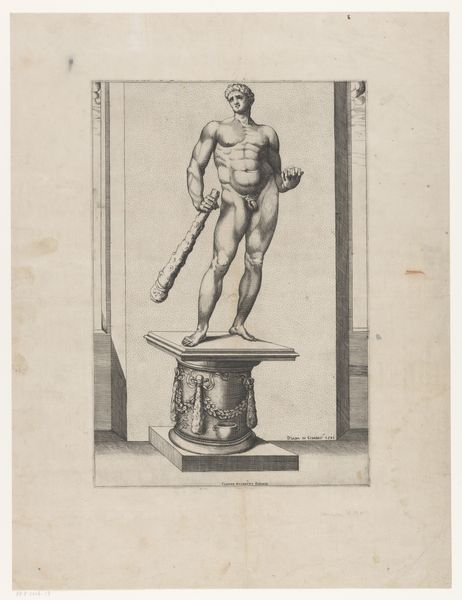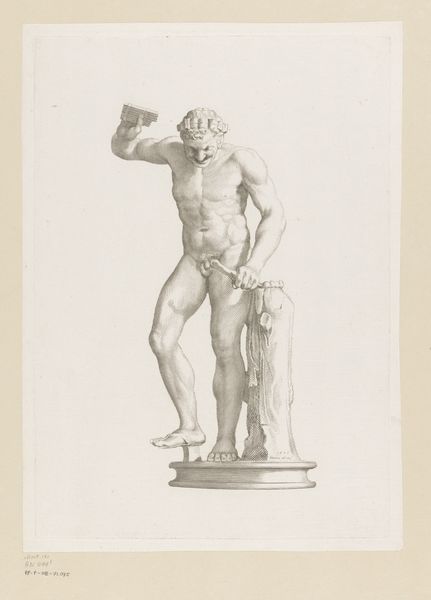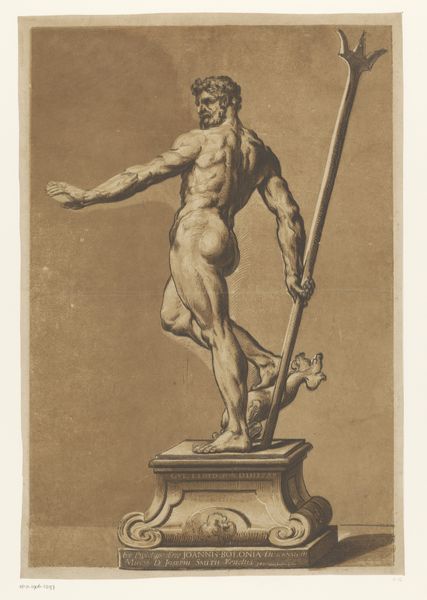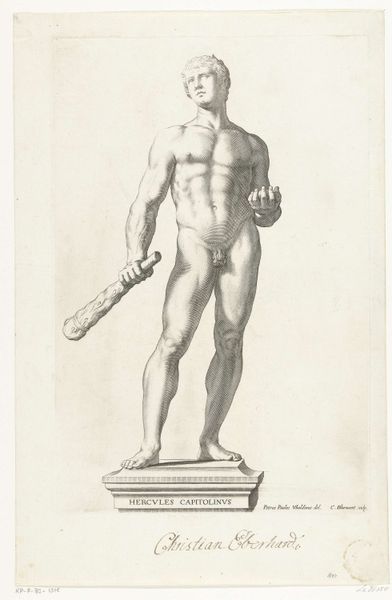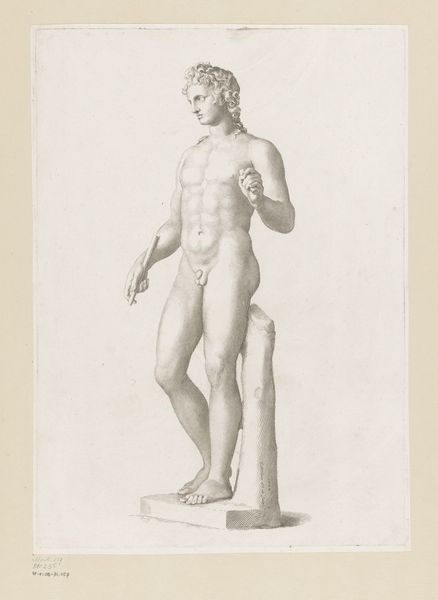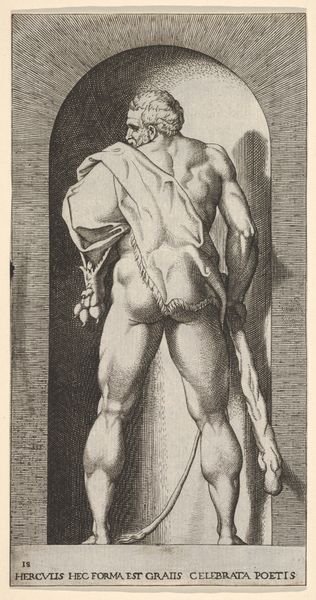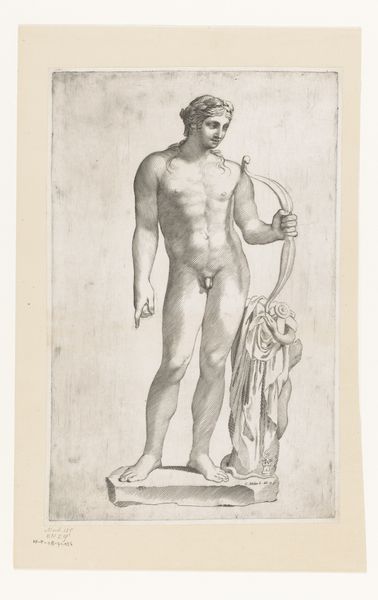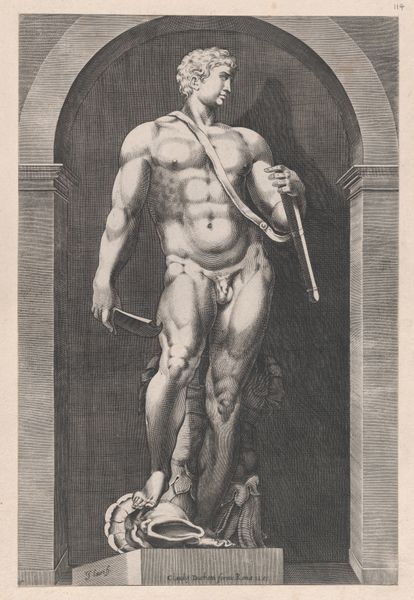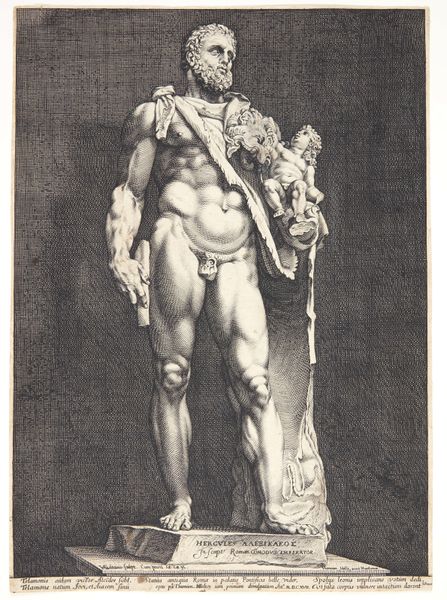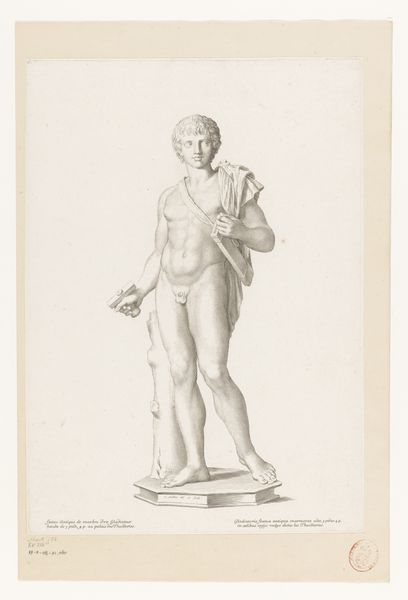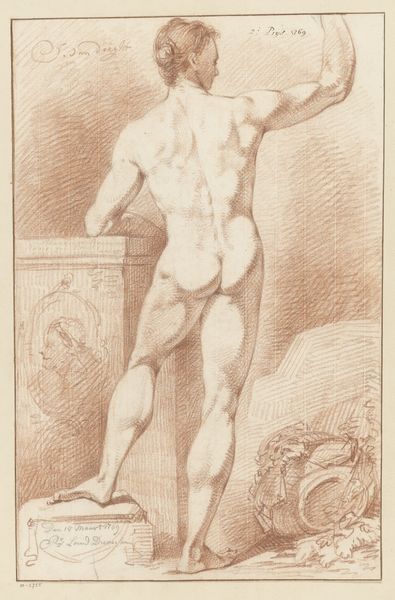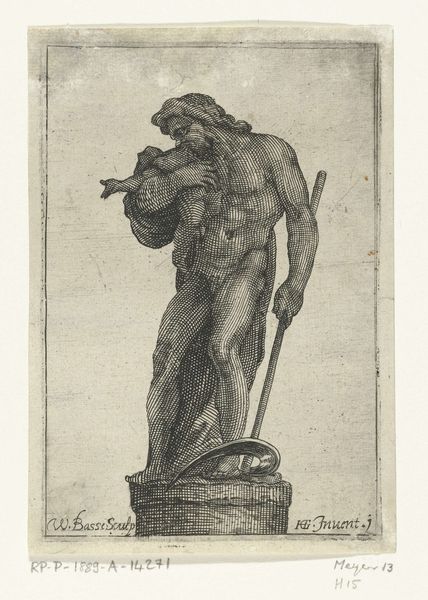
drawing, print, engraving
#
drawing
# print
#
mannerism
#
figuration
#
history-painting
#
italian-renaissance
#
nude
#
engraving
Dimensions: plate: 13 3/4 x 9 1/4 in. (35 x 23.5 cm) sheet: 18 1/8 x 12 in. (46 x 30.5 cm)
Copyright: Public Domain
Curator: It’s an engraving dating back to 1581 by Diana Scultori, titled “Hercules with the Apples of the Hesperides”, presently held at the Metropolitan Museum. What strikes you about this representation of Hercules? Editor: He seems rather self-contained, even melancholy. The monochrome starkness, combined with the sheer monumentality of his form and club, creates an oddly muted drama. The composition emphasizes verticality, reinforcing his powerful, if static, presence. Curator: It’s fascinating that you pick up on the melancholy, which counters prevailing readings. Scultori made this print after a drawing by Giulio Romano. Looking at it historically, such depictions of Hercules were deployed to promote the ideals of learned, virtuous, and heroic rulers, part of a broader political strategy to align power with mythological authority. Editor: Yet, there's something about the stark contrast and tightly controlled line work that fights against heroic bombast. The engraving itself, as a medium, imposes a certain discipline. The cross-hatching meticulously defines the musculature, creating texture and depth but also restricting the unbridled energy one might expect. Curator: Precisely! It points to the art world’s institutional constraints, wouldn't you agree? Scultori, a female artist navigating a male-dominated art world, probably faced significant social hurdles. Producing prints after designs by established male artists allowed her to participate in the art market while navigating those limitations. She's operating within prescribed boundaries, subtly reshaping them. Editor: It’s a fascinating dance between content and form, then. The cultural weight of the Hercules myth is palpable, yes, but equally intriguing is how the artist refines the presentation. Notice the subtle twist of his torso, the controlled tension – an intricate, intellectual exercise. Even in representing this famed strongman. Curator: The print circulated within a culture of erudite collectors and humanist scholars who prized mythological themes and allegorical depth. They would surely recognize Hercules as an exemplar of fortitude, associating him with concepts of governance and morality which legitimized the rule of law during this post-Reformation period of political consolidation. Editor: Yes, thinking of Scultori’s careful artistry combined with your art historical framework—one glimpses more in this single depiction of the mythological hero, doesn't one? Curator: Indeed. By understanding both its making and historical situation, the print gives us more than a singular perspective. Editor: Quite so; I will consider prints from a very different perspective from now on.
Comments
No comments
Be the first to comment and join the conversation on the ultimate creative platform.
